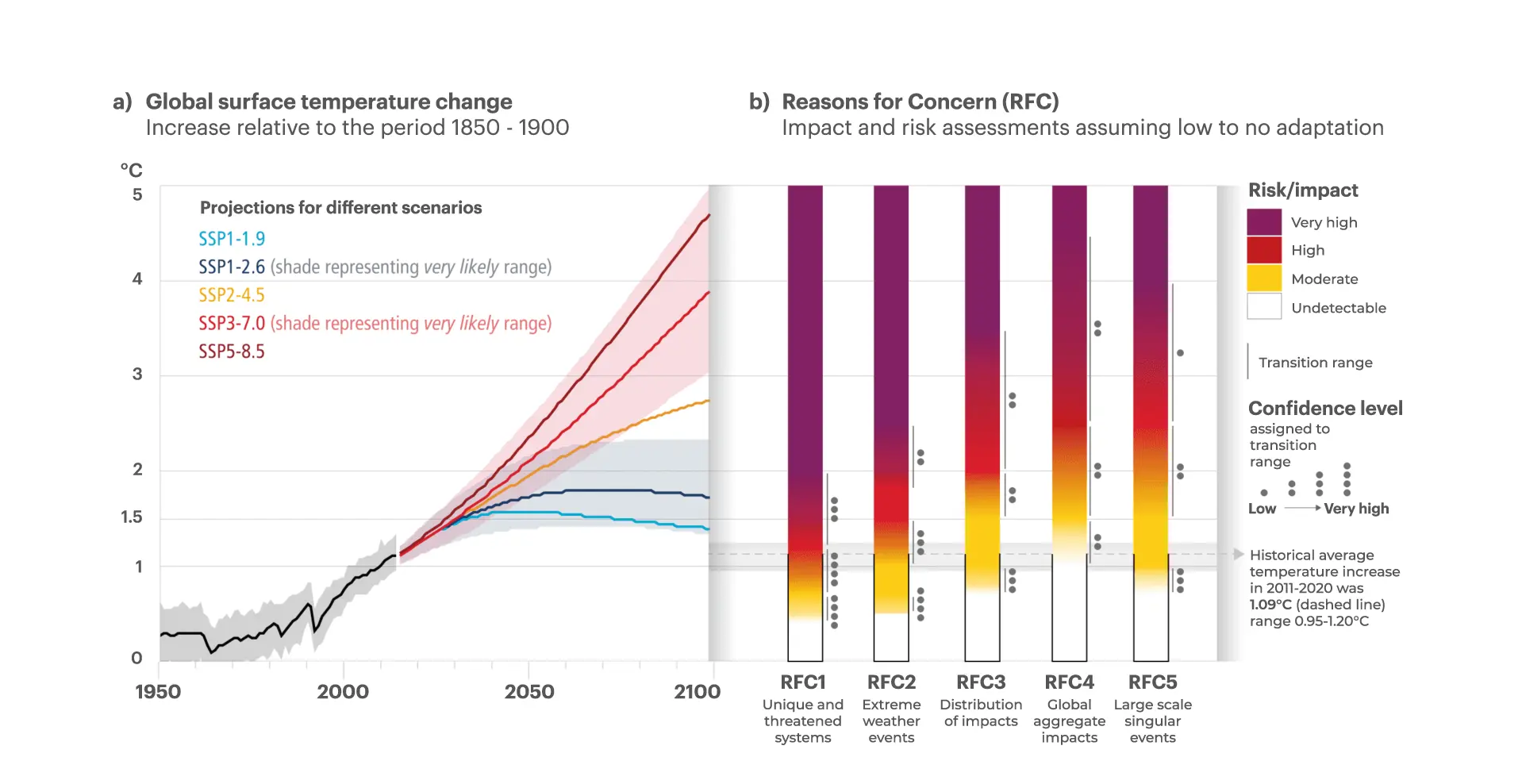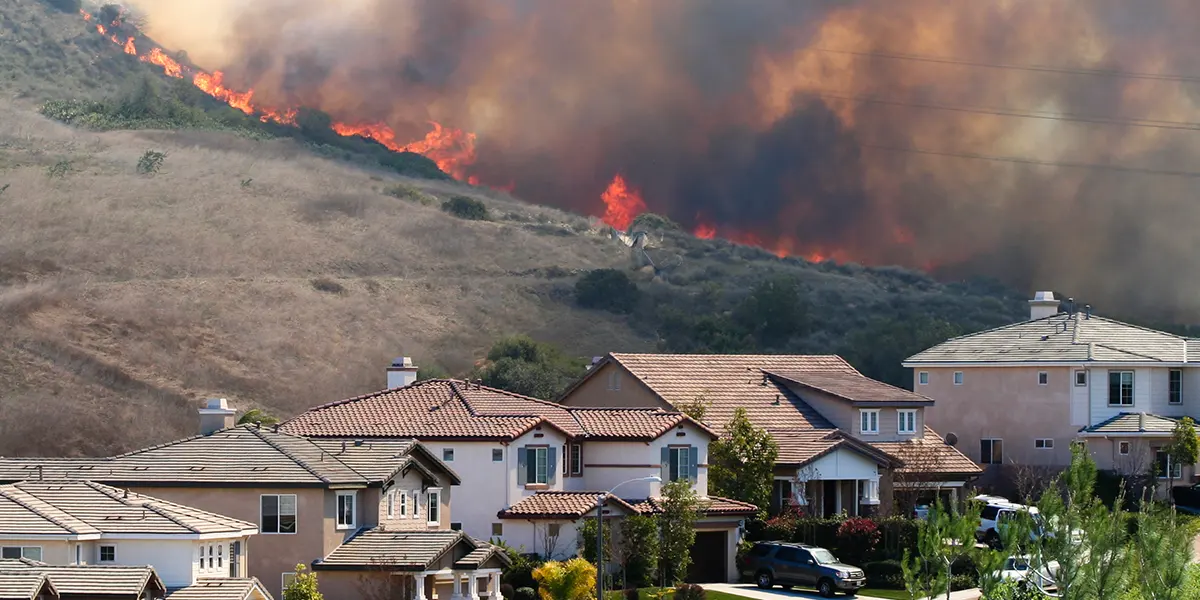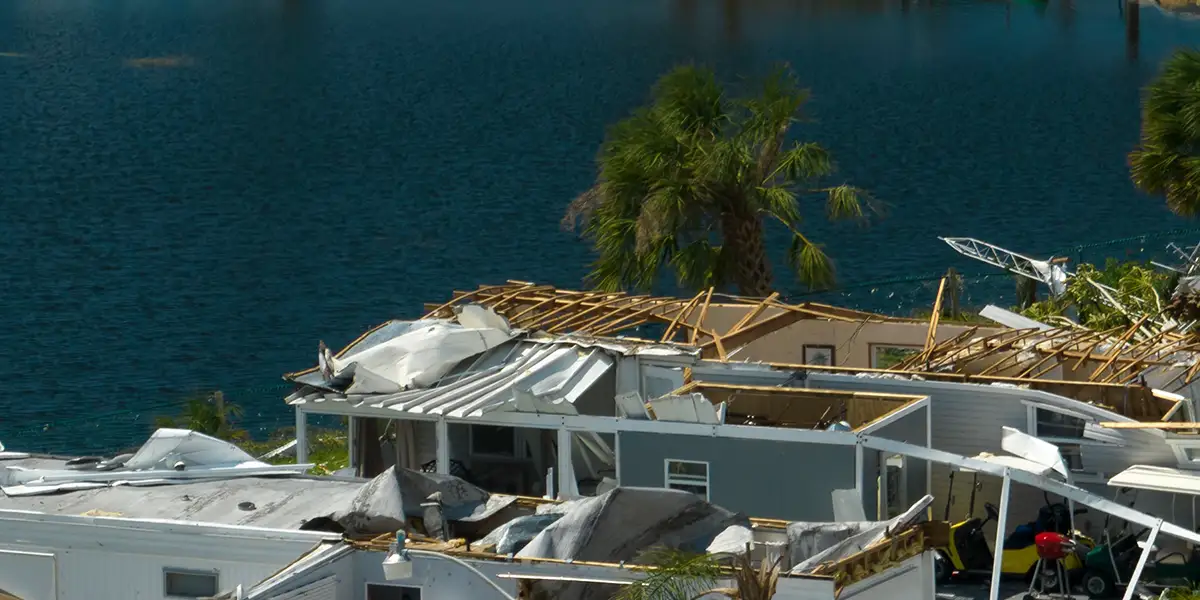COP27 is looking beyond mitigation, focussing on increased funding and implementing climate adaptation actions in the face of mounting global risks. The measures outlined in the Sharm-El-Sheikh Adaptation Agenda include around 30 adaptation outcomes needed to address the adaptation gap. Although pledges to mitigate increase, emissions continue to rise, and climate devastation proceeds impacting virtually every industry. Ambitious action to adapt to climate change is paramount.
Adaptation and mitigation must be pursued with equal force and urgency”
Mitigation vs Adaptation
The direct correlation between increasing global average temperatures and the concentration of greenhouse gases (GHG) in the atmosphere has driven efforts to reduce emissions through mitigation. Mainly conventional mitigation efforts stimulated by governments and the private sector employ decarbonisation technologies and techniques that reduce CO2 emissions, such as renewable energy, efficiency gains, fuel switching, nuclear power, and carbon capture storage, usage, and storage (CCUS). However, conventional mitigation efforts alone are not sufficient to meet the targets stipulated by the Paris agreement. Adaptation is, therefore, unavoidable.
To tackle climate change, efforts will require a macro and a micro-level attempt to adapt to and mitigate against climate change simultaneously. Adaptation with strong mitigation is vital. Any success of adaptation depends upon the level achieved of mitigation. But as the world approaches five disastrous climate tipping points with increasingly severe weather events such as wildfires and flooding, adapting to climate change with more resilient measures will pay dividends by preparing for future climate shocks. Adaptation implementation is lagging when compared to mitigation actions. Many different actors across the globe are focused on delivering adaptation actions. Still, the direction to transformative solutions needs to be substantially more tangible and attainable outcomes to varying levels of maturity. With adaptation efforts largely anticipated to be more incremental, there is still little evidence of effective physical risk reduction from implemented action threatening to disrupt vulnerable industries, such as infrastructure systems and banks.

While disasters increase, amongst the scientific community, the range of options for adaptation is shrinking with increasing warming. Despite global adaptation planning making substantial progress, such measures remain unable to keep up with increasing climate risks that will impact virtually every industry, reinforcing existing vulnerabilities and could introduce new risks. Even extensive investment in adaptation cannot fully prevent climate change events, so dealing with losses and damages cannot be avoided. It is estimated that international adaptation costs will reach $160bn to $340bn by 2030 and $315bn to $565bn by 2050, needed across both public and private sources. Although global adaptation actions and finance mobilisation are growing, it isn't fast enough to match the speed at which our climate is changing across geographies.
Adaptation Risks
Adaptation gaps are enormous for companies with blind spots in their assessments of climate change impacts and in developing strategies for managing them. The following gaps highlight how businesses need to improve their adaptation risk measurement protocols:
- Interdependencies: Climate risks from interdependencies (risks arising from an organisation's reliance on another organisation or sector) are not consistently incorporated into risk assessments.
- Multiple climate scenarios: Risk assessment needs to consider multiple possible climate futures to enable robust adaptation decisions.
- Identified actions linked to risks with clear timescales: Adaptation actions need a clear link to the climate risks they seek to address. Clearly stated timescales support the delivery of adaptation actions.
- Appropriate monitoring and evaluation: Improved information on the effectiveness of recent and planned adaptation actions for organisations in all sectors.
Mandatory Regulations
A greater focus from governments is being taken through far-reaching regulation mandates to ensure businesses provide disclosures and comply with an ever-evolving climate-related regulatory landscape when mitigating and adapting to climate change. Organisations that track GHG closely and report results appear better positioned than those that don't to minimise the consequences of new regulatory requirements. "It is clear too that a diversity of policy approaches can be used to boost mitigation efforts while ensuring energy security and affordability", stated OECD Secretary-General Mathias Cormann. This is exemplified by carbon pricing, one of the most powerful mitigation regulation tools, an option for governments to help reduce emissions and act as an incentive for investment in cleaner technology. Despite the fractured complexities of introducing carbon tax with some sectors opposed due to financial reasons, 'carbon-leakage' methods that enable businesses to move operations to other less stringent emission policy countries and carbon taxes not targetting other carbon compounds such as methane, carbon-pricing is being adopted slowly across the globe to help mitigation measures.
The Task Force on Climate-related Financial Disclosures (TCFD) showcases adaptation regulation. TCFD aims to ensure firms' climate-related disclosure of consistent and comparable information to allow companies to incorporate climate-related risks and opportunities into their risk management and decision-making processes. While carbon emission regulation will burden certain companies more than others, increasing regulatory policy is necessary to set the rules of the climate game for both mitigation and adaptation measures. Firms need to understand the changing regulatory landscape, and Climate X can support businesses in understanding this changing space to prepare and meet standards.
An Opportunity
As the global economy teeters and an energy crisis amounts to an increasing climate crisis, the culmination of world leaders, ministers and negotiators from across the globe at COP27 is an opportunity to build upon the existing COP26 foundation and invigorate shaping a realistic future of climate action, especially for climate adaptation.
Climate X is here with Spectra, which shares a range of features to be a part of that mission by enabling organisations to build climate-resilient organisations.
Sources
- https://climatechampions.unfccc.int/wp-content/uploads/2022/11/SeS-Adaptation-Agenda_Complete-Report-COP27_FINAL-1.pdf
- https://www3.weforum.org/docs/WEF_Critical_Business_Action_2022.pdf
- https://link.springer.com/article/10.1007/s10311-020-01059-w
- https://www.ipcc.ch/report/ar6/wg2/
- https://pubmed.ncbi.nlm.nih.gov/36074831/
- https://www.nature.com/articles/s41558-021-01170-y
- https://www.ifrc.org/sites/default/files/2021-05/20201116_WorldDisasters_Full.pdf
- https://www.iddri.org/en/publications-and-events/scientific-publication/pathways-coastal-retreat
- https://www.unep.org/resources/adaptation-gap-report-2022
- https://www.oecd.org/newsroom/share-of-emissions-covered-by-carbon-prices-is-rising.htm
- https://www.ipcc.ch/report/ar6/wg3/downloads/report/IPCC_AR6_WGIII_SPM.pdf
- https://assets.bbhub.io/company/sites/60/2022/10/2022-TCFD-Status-Report.pdf





